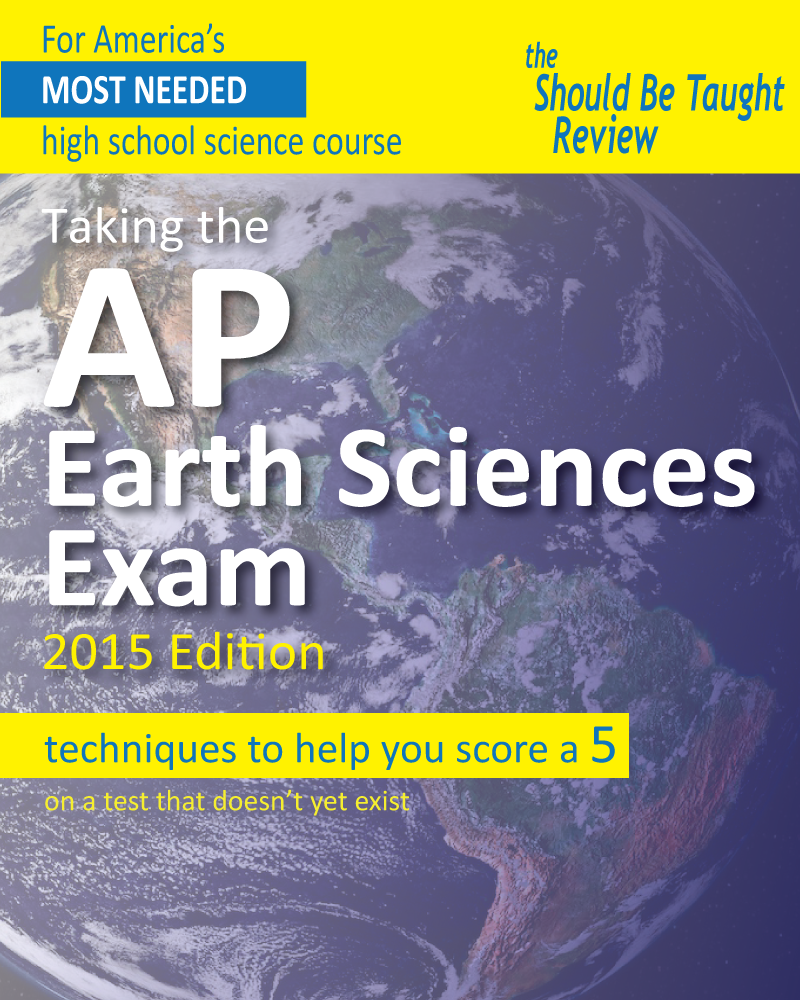 Climate change is the most urgent existential issue we face, yet education about climate change is often missing in action from K–12 schools. Every high school offers biology courses, but few offer earth science courses in which climate change would be a major topic. Why?
Climate change is the most urgent existential issue we face, yet education about climate change is often missing in action from K–12 schools. Every high school offers biology courses, but few offer earth science courses in which climate change would be a major topic. Why?
A new report from the American Geosciences Institute provides insight into this educational gap. According to the AGI report:
One of the points...was the perception that school districts were not offering high school Earth and Space Science courses because of the belief that colleges will not accept these for admission, as Earth and Space Science is not universally considered to be a laboratory course...
...8.6 percent [of colleges] did not accept an Earth and Space Science course for admission, as these institutions stated that they did not consider it to be a laboratory course.
Wow. Earth science does not count as a laboratory course in one out of twelve colleges? That might come as surprising news to geology students laboring through labs every bit as challenging and rigorous as in comparable courses in chemistry, physics, and biology. That might also come as a surprise to my former colleagues at the United States Geological Survey, where you will find droves of motivated scientists working in...wait for it...research laboratories.
The fact that one in twelve colleges deem earth sciences inferior to other disciplines reflects a disturbing, perhaps willful, ignorance about one of the major branches of science, a branch involving cutting edge scientific research in some hot areas (I’m looking at you, volcanology). This ignorance becomes doubly problematic because earth science courses are the natural place to talk about the most pressing issue we face: climate change. And yet the attitude of these colleges is part of the reason that climate change isn’t presented at the K–12 level.
There is room in traditional K–12 science classes—biology, chemistry, and physics—for teachers to sneak in aspects of climate science. Biology instructors, for instance, can talk about ecological zonation, and how these zones may change in the future as climate shifts, with some animals seeking higher ground, while other organisms going extinct. Physics courses present a chance to learn about electromagnetic radiation and the importance of the infrared to climate change. The chemistry classroom can be a place to talk about the composition of the atmosphere, how it is changing, and the isotopic evidence that humans are causing this change. But nothing beats having a straight earth science course to talk in depth about climate change.
In my geology courses, I begin the semester telling my undergraduate students that geology is the application of physics and chemistry to questions about the earth (and other planets). Seen this way, geology is the sister science to biology, which uses physics and chemistry to probe questions about the living world. With an understanding of both geology and biology, you get a pretty comprehensive view of what happens here on this interesting third rock from the sun.
We might hope that the Next Generation Science Standards—already adopted in fifteen states, more or less, with Iowa the latest, will help put geology in the classroom. The AGI report observes that it’s too soon to rejoice:
The release of the Next Generation Science Standards...puts the Earth and Space Sciences on an equal footing with the Life Sciences; the Physical Sciences; Engineering and Technology and Applications of Science. Yet, the reality of practice falls short of these standards:
- Only one state requires a year-long Earth/Environmental Science course for high school graduation, whereas thirty-two (32) states require a Life Science course and twenty-seven (27) states require a Physical Science course.
- A high school Earth and Space Science course is not universally accepted by four-year institutions of higher education for admission.
- There is no Advanced Placement (AP) Earth and Space Science course or examination, which has several implications, including the fact that AP courses can be a major driver for a subject’s inclusion in the high school curriculum nationwide.
If the emphasis on earth sciences in the NGSS helps to rectify the neglect of geology at the K–12 level, that will be another reason to appreciate them.
It’s important for climate change to be in the K-12 science classroom. High school graduates who are ignorant about climate change are uninformed citizens and become part of the machinery of delay, contributing to the inertia as politicians argue about the reality of climate change even as they witness its consequences. With vested interests attempting to keep citizens as uninformed and as uncertain as possible while the vested interests run out the clock, the lack of a firm place for climate education in public schools is a major problem. But it is fixable.
